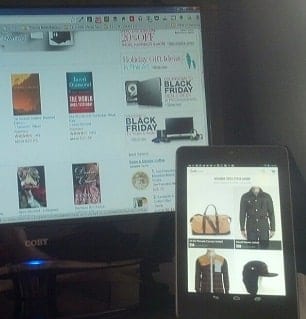The Impact of Booming mCommerce on Retail Supply Chains
Mobile commerce - mCommerce, for brevity- is the latest technology-driven boom to impact the way we shop. Anything that affects this area of our lives inevitably has implications all the way down the supply chain.
The figures are exciting for the retail sector, especially any retailer already investing in online and mobile platforms to connect with consumers. In just one year the value of mCommerce to the overall online commerce picture has surged 68.2%, now representing almost $42 billion of the total $262.3 billion ecommerce sales predicted for this year (eMarketer, 2013).
Driving Change By Disruption
Technology is relentless in its march to improve, test and advance. This has been particularly true of the digital era, where the move to mobile - and, most importantly, to smartphones - has been even more rapid than the move to the web.
Retailers may have been caught off guard by this pace initially, but they are rapidly catching up with the huge potential to increase sales and brand awareness. At the same time, competitive online start-ups are cropping up all over the place, rolling out smartphone apps and shopping sites to suit every type of product and consumer. Once a customer finds the right app or site for them, one-click purchases are an alluring - and dangerous! - tap of the finger away.
In turn, larger and established retailers have rapidly adapted to meet the challenge posed by the online environment. Customer service via social media has boomed, guiding consumers through the purchase process, resolving complaints, and generally trying to convince consumers that big brands still provide the best bang for our buck.
The big names aren't averse to going after one another's dissatisfied customers either, as the phenomenon of "social conquesting" between the likes of Wal-Mart and Best Buy has demonstrated in the past, and will continue to do during what promises to be a booming holiday season.
Interestingly, with all this change to how orders are secured being driven by technology, there are calls to maintain uniform systems to manage the eCommerce fulfillment process.
Standardization is preferable to multiple unique systems in the logistics industry, some argue, and less frequent disruption permits more stable ways of working to successfully deliver. Right or wrong, it proves to be a stark contrast to the rampant innovation that prompted the increased mCommerce-based demand in the first place.
3PL Provider Preparation
As our lives edge closer to an 'always on' state of being, we expect those who provide us with a service to be more and more available outside of standard business hours. Amazon's deal with the U.S. Post Office to deliver on Sundays is just an early example of how flexible operations will need to become.
If we can order a product at midnight, we expect an update on the first steps of the shipment not long after that point, possibly even to the extent of knowing when it is picked. As these expectations of customers on retailers shift towards full visibility, the same challenge clearly exists for logistics providers. We must have both the technology to track efficiently and the expertise to advise clients on the most effective systems to manage ecommerce order fulfillment, from first transaction to final delivery.
It will be incumbent upon 3PL providers to coordinate closely with clients to understand just how technology is driving changes to their logistics needs. For all the benefits that technology affords us, it will be good old fashioned relationships that provide the bedrock for a smooth, efficient order fulfillment process.
